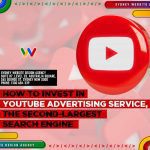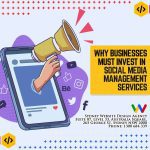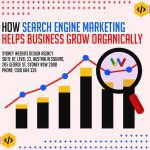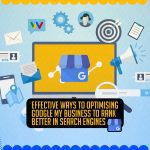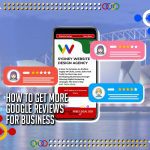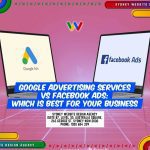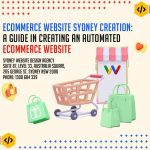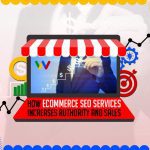Email Marketing as An Efficient Growth Contributor for Your Business

Email marketing, although presumed as a more traditional avenue in engaging with audiences, is remarkably a reliable platform to grow your business. According to Oberlo, an average of $42 is expected for every $1 spent on email marketing. Almost90% of marketers also use email marketing to distribute their content to potential customers. Although social media seems to be a better platform for connecting with your audiences, the number of email users worldwide is far greater than social media channel subscribers. In fact, the number of email users is expected to grow to 4.6 billion in 2025, almost half of the world’s population. If you are not using any form of email marketing campaign today, now is the best time to start. With a robust email marketing campaign and strategy, you can easily connect with your audiences at the click of a button.
Introduction
Email marketing has been around for a long time and is one of the most effective ways to reach customers. You can use email to keep them updated on new products, or offer discounts and other services. It’s also a great way to soft-sell your business by educating your audience about its value. Email marketing can be anything in between, making it a versatile tool for growing your customer base. Email marketing can notify your subscribers of new products and services, but it can also be used to simply keep them engaged with your brand between purchases. There are a few different email marketing strategies you can use to grow your funnel. Learn more by reading this blog post.
Table of Contents
- What is Email Marketing for Small Businesses?
- Which Email Marketing Strategies Works Well for Small Business
- The Basics of an Effective Email Marketing Strategy
- Email Marketing Automation
- Best Time to Send Emails
- Creating Subject Headlines that Converts
- Content Ideas for Email Marketing
- Design Tips
- Segmenting Your Target Audience
- Tracking Your Email Marketing Efforts
- FAQs of Email Marketing Strategies
- Improving Your Email Marketing Strategy With Sydney Website Design Agency
What is Email Marketing for Small Businesses?

As a small business, the key to getting potential customers is by providing them with the information that you have something that will solve their problem or satisfy a need. One can achieve this through various marketing channels too, but, the best option for personalised connections with your audiences is through email marketing. With emails, you can directly communicate with each of your leads on a more bespoke level. Tailor content, offers, discounts, and updates that are valuable to them, but may not be as valuable to your other set of audiences. Such techniques can also improve customer loyalty.
Email marketing can help you foster stronger customer connections and create a more powerful brand to increase conversions and expand your company, regardless of its industry. Small companies often shy away from email marketing, thinking that it is too expensive and ineffective. The truth is,
there is investment involved in email marketing. But together with the investment comes a high ROI of up to, 4400%. Despite the expense involved in email marketing, the reaps you sow are quite bountiful. The next time you think less about the power of email marketing in growing your customer base and expanding your business, look back to this post. You will realise how powerful email marketing is, even for small businesses and startup businesses like yours.
Which Email Marketing Strategies Works Well for Small Business

There are several digital marketing techniques accessible these days. Most small companies concentrate exclusively on social media and other channels rather than email marketing as a primary method of communication with their audience, which is a mistake. Do not make the same mistakes as others do. Email marketing can do a lot of good for your business. But which email marketing strategy would work best for your small business? Here are some ideas.
Welcome Emails
Creating a strong first impression is key when trying to build any relationship, whether personal or professional. The same can be said of your organisation’s welcome email. Focus on giving off a good first impression that illustrates your industry knowledge and expertise, without going overboard with the sales pitch. Welcome emails with a personal touch have been shown to have better open and click-through rates, so use this opportunity wisely.
Email Newsletters
Email newsletters are the cornerstones of email marketing programs for many industrial businesses. Newsletters allow you to teach customers and prospects about your business while highlighting employee profiles, company passion projects, and relevant graphics. Dedicated Emails Standalone emails, also known as dedicated emails, provide information on just one offer. For example, you might notify your target audience about a new white paper or invite them to attend an industry event that you are hosting. Dedicated emails assist in establishing the environment for the main call-to-action by setting up the context. There are some instances when each one of your subscribers should be notified, for example if you have a time-sensitive new offer or an emergency that affects the entire nation. However, in most cases, it’s best to segment your subscribers heavily according to their different behaviours and interests.
Lead Nurturing Emails
Lead nurturing emails are designed to build relationships with potential customers, even if they’re not yet ready to purchase your product. By providing helpful information and valuable resources over time, you can establish trust and credibility, eventually leading the recipient down your sales funnel.
Product Announcement Emails
When you have a new product or service to announce, use email marketing to get the word out. This type of email should include images and videos when possible, as well as a clear call-to-action. Product announcement emails are also an excellent way to increase urgency and encourage click-throughs.
Customer Retention Emails
The goal of customer retention emails is to keep your target audience engaged with your brand so that they don’t become inactive or churn. By sending out periodic emails with helpful information, personalised recommendations, and exclusive deals, you can keep your customers coming back for more. These are some email marketing strategies that work well for small businesses. Implement these strategies in your email marketing program and see the results for yourself.
The Basics of an Effective Email Marketing Strategy

An effective email marketing strategy can be the key to successful online marketing for your business. It can help you reach a larger audience, build customer loyalty, and boost sales.
However, as with any marketing strategy, there are certain best practices that should be followed to create an effective email marketing campaign. In this article, we’ll take a look at some of the most important aspects of an effective email marketing strategy.
An effective email marketing strategy can be the key to successful online marketing for your business. It can help you reach a larger audience, build customer loyalty, and boost sales.
However, as with any marketing strategy, there are certain best practices that should be followed to create an effective email marketing campaign. Take a look at the basics you should be including in your email marketing strategy. Check out a few of our suggested email marketing tips best for small businesses.
Personalise Your Messages
When we talk about bespoke email marketing, we don’t imply that you send a personalised message to each and every individual subscriber. Personalisation implies that you utilise client information to create a tailored message. This email marketing strategy is a top priority you should include with your email campaigns.
Email marketing software includes features wherein you can personalise your email greetings. Instead of saying “Dear Customer”, you can actually set it to Dear “First Name” “Last Name”. This creates an impression that you are actually sending the email to a person, and not to a group of subscribers that you have on your emailing list.
Recipients Name on Subject Line
When you personalise the subject line of your email and include the recipient’s name, it stands out in their inbox. They are more likely to open an email that has their name on it than one which doesn’t.
This works especially well when you couple it with a relevant and interesting subject line. For example, if you are a travel company and are sending an email about a new holiday destination, you can use the recipient’s name in the subject line along with something like “Discover the hidden gems of Sicily with John”.
Make Use of Segmentation
Email segmentation is grouping your subscribers based on certain criteria so that you can send them more targeted content. This results in improved engagement as recipients feel that the email is more relevant to them.
There are many different ways that you can segment your subscribers. Some of the most common criteria include age, gender, location, interests, and purchase history.
For example, if you are a clothing retailer, you could segment your subscribers by gender and then send them content that is specifically tailored to their gender. Or, if you are a travel company, you could segment your subscribers by their location and send them content about nearby destinations.
The important thing to remember with email segmentation is that you should only use criteria that are relevant to your business and will result in improved engagement. Using too many criteria can be overkill and actually result in less engagement.
Send Mobile-Friendly Marketing Emails
It’s no secret that more and more people are using their mobile devices to access the internet. In fact, over 60% of all email is now opened on a mobile device.
This means that it’s essential to ensure that your email marketing campaigns are optimised for mobile. This includes using a responsive email template that will resize to fit any screen size, as well as using short and concise copy that is easy to read on a small screen.
Include a Call-to-Action
Every email marketing campaign should have a call-to-action (CTA). A CTA is simply an instruction to the recipient about what you want them to do next. It could be something like “Visit our website”, “Download our e-book”, or “Buy Now”.
Your CTA should be clear and concise, and it should be placed in a prominent position within the email so that it’s easy to see. It’s also a good idea to use actionable language that encourages the recipient to take the desired action.
Track and Test Your Results
Finally, it’s important to track and test your results so that you can continually improve your email marketing campaigns. There are many different metrics that you can track, such as open rate, click-through rate, unsubscribe rate, and conversion rate.
It’s also critical to test different aspects of your email marketing campaigns to see what works best. This could include testing different subject lines, send times, or email content.
By tracking and testing your results, you can make sure that your email marketing campaigns are as effective as possible.
Email Marketing Automation

Email marketing automation is a process whereby email messages are automatically triggered and sent to a target audience according to certain criteria. This can be based on factors such as time, user location, or behaviours such as opening an email or clicking on a link. Email marketing automation can be a very effective way to stay in touch with your audience and keep them engaged with your brand.
There are many benefits of email marketing automation, including the ability to reach a wider audience, save time by automating repetitive tasks, and improve customer relationships. However, there are also some potential risks associated with this type of marketing, so it’s important to weigh the pros and cons before deciding if it’s right for your business.
If you’re considering using email marketing automation, here are some things to keep in mind:
Pros:
Reach a larger audience with less effort
Automating your email marketing means you can send messages to a larger number of people without having to put in extra time and effort.
Save time on repetitive tasks
Once you’ve set up your email marketing automation, it will handle the majority of the work for you. This frees up your time, so you can focus on other aspects of your business.
Improve customer relationships
Email marketing automation can help you stay in touch with your customers and build strong relationships. By sending timely and relevant information, you can show that you value their patronage and business.
Cons:
Spam potential
If not done correctly, email marketing automation can result in your messages being flagged as spam. This can cause your messages to be blocked by email filters and may even get your account suspended.
Missed opportunities
If you’re not careful, you may unintentionally ignore potential sales or leads by automate your email marketing. It’s important to consider your target audience and make sure you’re sending messages that they’ll find valuable.
Less personal touch
One of the advantages of email marketing is the personal touch it offers. When you automate your messages, this element is lost and your messages may appear cold and impersonal.
Email marketing automation can be a great way to reach a larger audience and save time on repetitive tasks. However, it’s critical to weigh the pros and cons before deciding if it’s right for your business. If you do decide to automate your email marketing, be sure to do so carefully to avoid any potential pitfalls.
Best Time to Send Emails

It is all about timing and content when sending out emails to your clients. Sending them on a Friday will most likely get your email ignored. Meanwhile, scheduling your email blast on a Monday might just bury your email together with the hundreds or thousands of emails potential partners and customers you receive at the start of the workweek.
So, when is the best time to send your marketing emails? It depends on your audience, but here are some general guidelines:
For B2B audiences: Tuesdays and Thursdays tend to be the best days for email open rates. Avoid sending emails on Mondays, when people are trying to catch up from the weekend, and Fridays, when people are already thinking about the weekend. Midday is generally the best time to send an email, around 10 or 11 am.
For B2C audiences: Wednesday mornings tend to work well for email open rates. This is because people are more likely to have time to check their personal email accounts mid-week, instead of early in the week or over the weekend. As with B2B audiences, avoid sending emails too early in the morning or too late at night. Midday is still the best time to send, around 10 or 11 am.
In general, it is best to avoid sending email blasts on Mondays and Fridays. Tuesdays, Wednesdays, and Thursdays tend to be the best days for open rates. And, as with all things related to email marketing, testing is key. Try out different days and times to see what works best for your audience.
Creating Subject Headlines that Converts

If you want to improve your blog’s conversion rate, then you need to learn how to write subject headlines that convert.
The subject line is the first thing that people see when they come across your blog post. It is important to make sure that it’s effective to encourage people to click through and read the rest of your content. The more engaging your subject lines are, the more likely will your click-through rate increase.
Here are some tips for writing effective subject headlines:
1. Keep it short and thoughtful
People have short attention spans, so it’s significant to keep your headlines short and to the point. Try to avoid using long, complicated phrases or sentence structures – instead, opt for something that is easy to read and understand.
2. Use keywords wisely
Keywords also plays significant roles in your marketing efforts. Add keywords to your headlines and throughout your email content, all providing useful information to your target market. Convey your ideas and thoughts while paying attention to key details, terms, features, and services that are beneficial for your audiences.
3. Make it catchy
Your headline should be attention-grabbing and interesting, making people want to click through to read the emails. Use strong words and emotional language to grab people’s attention and make them curious about what you have to say.
4. Be unique
With so much content out there, it’s essential to make sure that your headline stands out from the rest. Avoid using generic phrases or titles that could be applied to any number of emails. Instead, focus on making your headline specific to your content.
5. Test and adjust
If you’re uncertain whether your headlines are effective, then it’s a good idea to test out different versions and see which ones perform the best. Try changing up the length, wording, and style of your headlines until you find something that works well for your emails.
By following these tips, you can learn how to write subject headlines that convert and encourage more people to read your emails. With a little practice and experimentation, you’ll be able to find the perfect formula for creating attention-grabbing headlines that increases your open rate and conversion rate.
Content Ideas for Email Marketing

Email newsletters are beneficial for both businesses and consumers. Why? Email newsletters give businesses an opportunity to send multiple messages to a fully invested, qualified audience. But which type of content works for your audiences? Here are some of the types of content you should be including in your email marketing strategy.
Positive Articles About Your Company
Email newsletters are the perfect way to show off your company’s successes. By sending positive articles or even customer testimonials, you’re letting your audience know that you’re a company worth doing business with.
How-To Guides
Email newsletters are also a great resource for providing helpful tips and tricks to your subscribers. Not only does this type of content show that you’re an expert in your field, but it also provides value that your subscribers can use in their everyday lives. Marketing strategies should always include ideas and content that are geared towards the welfare of your audiences.
Business Changes that Impacts Customers
In addition to promoting your company’s successes, it’s also important to keep your subscribers updated on any changes that might impact them. This could be a change in hours of operation, a new product or service offering, or even a change in company policy. By keeping your subscribers informed, you’re showing that you value their business and their time. Your email marketing strategy should always include topics that may affect your audiences.
Discounts and Promotions
Email newsletters are a great way to promote discounts and special offers to your subscribers. This type of content is especially effective at driving sales and encourage customers to take advantage of your products or services. Some email campaigns only focus on such type of email marketing content. You should limit such content to occasions wherein it would be significant to your existing customers.
Industry News
Keeping your subscribers up-to-date on industry news is a great way to show that you’re an expert in your field. Not only will this type of content keep your subscribers informed, but it will also help them make decisions about their businesses.
Awards, Nominations, and Wins
Sharing any awards, nominations, or wins that your company has received is a great way to show off your successes. This type of content will not only make your subscribers proud, but it will also help build trust in your brand. Such email marketing strategy can help build the authority of your brand to both your current and potential audiences.
There are a variety of types of content you can include in your email newsletters, but it’s important to choose content that will be most useful and relevant to your subscribers. The best way to do this is to segment your list so that you’re sending targeted content to each group of subscribers. By doing this, you’ll be sure to send an email campaign with the most relevant and engaging content possible.
Design Tips

There’s no question that effective email marketing campaigns can be a highly effective way to reach your target audience and boost your bottom line. But in order for your email campaign to be truly successful, you need to make sure your messages are well-designed and properly tailored to your audience. Otherwise, you run the risk of coming across as boring, irrelevant, or even spammy.
Here are a few design tips to keep in mind when crafting your next email marketing campaign:
1. Keep it simple.
Your emails should be easy to read and understand, so avoid using excessive amounts of text or complex formatting. Stick to short paragraphs and clear bullet points whenever possible.
2. Use images sparingly.
While images can help break up your text and add visual interest, too many can make your email look cluttered and difficult to read. Use them sparingly, and make sure they’re relevant to your message.
3. Choose your colours carefully.
The colours you use in your email can have a big impact on how it’s received by your audience. Stick to a limited colour palette, and be sure to use colours that complement each other well. Avoid using bright or neon colours, as they can be hard on the eyes and seem unprofessional.
4. Pay attention to typography.
Your choice of font can also influence how your email is perceived. When in doubt, go with a simple, easy-to-read font like Arial or Times New Roman. And be sure to use a reasonable font size – nothing too small or too large.
5. Create personalised messages
Personalised emails are more likely to be opened and read than generic ones, so take the time to segment your list and customise your messages whenever possible. Include the recipient’s name in the subject line and throughout the body of the email for best results.
By following these simple design tips, you can ensure that your email marketing campaign is both effective and visually appealing.
Segmenting Your Target Audience
One of the most important aspects of email marketing is segmenting your target audience. By doing this, you can tailor your emails to speak directly to the needs and wants of each individual customer, increasing the likelihood that they’ll act as a result.
There are several ways to segment your audience, but some of the most common include:
1. Location
If you have customers in different parts of the world, you may want to send them different emails based on their location. This could include special offers for local events or products that are only available in certain regions.
2. Age
Another key demographic factor to consider is age. What might interest a 20-year-old customer may not be relevant to a 40-year-old, and vice versa.
3. Gender
Just as with age, gender can also be a key factor in segmentation. What appeals to female customers may not have the same appeal for male customers, and vice versa.
4. Purchase history
You can also segment your audience based on their purchase history. For example, you might send different emails to first-time buyers than you do to repeat customers.
5. Interests
Finally, consider segmenting your audience based on their interests. This could include sending different emails to people who have expressed interest in specific topics or products.
By taking the time to segment your target audience, you can ensure that your email marketing campaigns are more targeted and effective. As a result, you’ll see improved results in terms of both leads and sales.
Additionally, it is important to remove inactive subscribers from your email list to be able to avoid wasting resources on leads that will not convert. This is one of the common email campaign strategy that people fails to consider. Most email service providers provide tools that can easily determine inactive subscribers from your list.
Tracking Your Email Marketing Efforts
![]()
Given that email marketing is the primary strategy for over 89% of marketers, it’s evident that email should play a role in helping your business grow. However, for effective results, you need to track your campaign progress. This will help ensure you’re driving desired outcomes and meeting objectives.
When it comes to email marketing, tracking your progress is essential to ensure you’re driving desired outcomes and meeting objectives. There are a number of key metrics you should be monitoring to get an accurate picture of how your campaigns are performing. Here are 10 of the most important ones:
1. Open Rate
This metric tells you what percentage of people who received your email actually opened it. A low open rate could indicate that your subject lines aren’t effective or that your audience isn’t interested in your content.
2. Click-Through Rate
This measures how many people who opened your email clicked on at least one link. A low click-through rate could indicate that your email content isn’t compelling or relevant to your audience.
3. Delivery Rate
This metric measures how many of your emails were successfully delivered to recipients’ inboxes. A low delivery rate could indicate that your emails are getting caught in spam filters or that there are issues with your email list.
4. Unsubscribe Rate
This tells you what percentage of people who received your email clicked on the unsubscribe link. A high unsubscribe rate could indicate that your content is not relevant to your audience or that they’re not interested in receiving emails from you.
5. Bounce Rate
This metric measures how many of your emails bounced back as undeliverable. A high bounce rate could indicate that there are issues with your email list or that your emails are getting caught in spam filters.
6. Spam Complaint Rate
This metric measures how many people who received your email marked it as spam. A high spam complaint rate could indicate that your email content is considered spam by recipients.
7. Conversion Rate
This measures how many people who received your email took the desired action, such as making a purchase or signing up for a newsletter. A low conversion rate could indicate that your email content isn’t effective at driving the desired action.
8. Revenue per Email
This tells you how much revenue was generated for each email that was sent. This metric can be used to measure the effectiveness of your email marketing campaigns in terms of ROI.
9. Number of Leads
This metric measures how many people were generated as leads from your email marketing campaigns.
10. Lead Quality Score
This metric measures the quality of the leads that were generated from your email marketing campaigns.
Monitoring these key metrics will give you a clear picture of how your email marketing campaigns are performing and where there is room for improvement. By tracking your progress, you can make adjustments to improve the results of your campaigns and achieve your desired objectives.
FAQs of Email Marketing Strategies
What are the best email marketing services for small business owners?
How can email marketing services help in establishing direct contact with existing customers?
What are the benefits of using a free email marketing service?
What features should I look for in the best email marketing platforms?
How do email marketing tools integrate with other marketing services?
What is the difference between paid plans and a forever free plan in email marketing platforms?
How do email marketing software and email automation work together?
How does email marketing cost vary among top email marketing services?
What makes a good email marketing service provider?
Are there any free email marketing software options that provide essential email marketing features?
Why should I consider all-in-one marketing platforms over standalone email marketing solutions?
In conclusion, choosing the right email marketing service depends on your business needs, budget, and the level of functionality you require. Whether you opt for free email marketing software or a more advanced email marketing tool, the key is to select a platform that aligns with your overall digital marketing strategy and helps you effectively reach and engage your target audience.
Improving Your Email Marketing Strategy With Sydney Website Design Agency

Email marketing is an effective technique to inform your consumers about new goods, offers, and other services. It may also be a gentler approach to educate your audience on the benefits of your company or keep them engaged between purchases. Sydney Website Design Agency can help improve your email marketing strategy with creative and effective designs for your email campaigns. By improving the visual appeal of your emails, you can encourage customers to open them and learn more about what you have to offer. With the right design, you can also create a sense of urgency or excitement that will motivate customers to take action.











